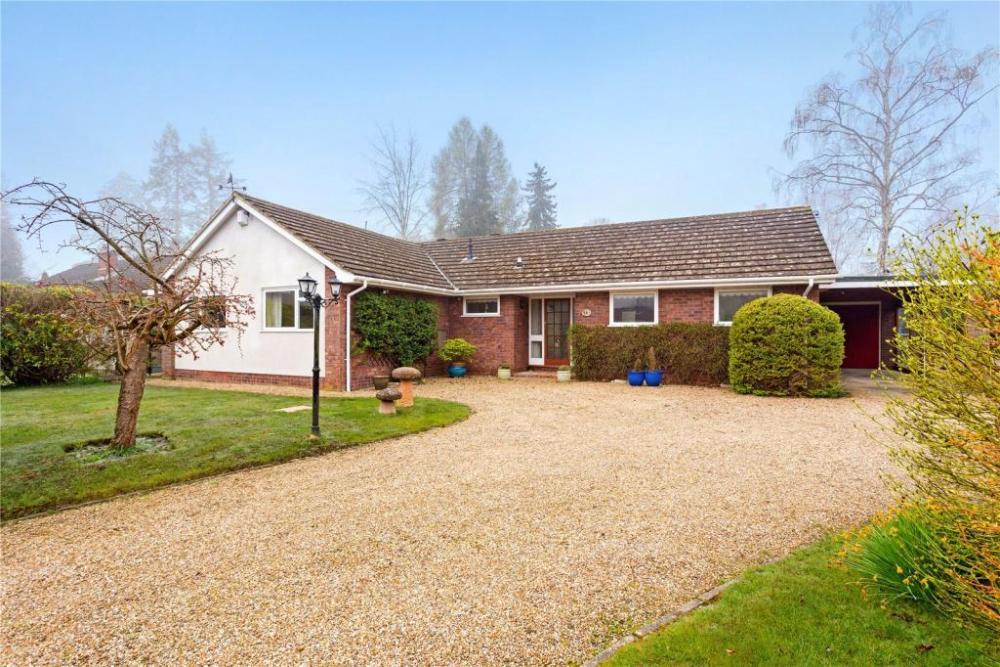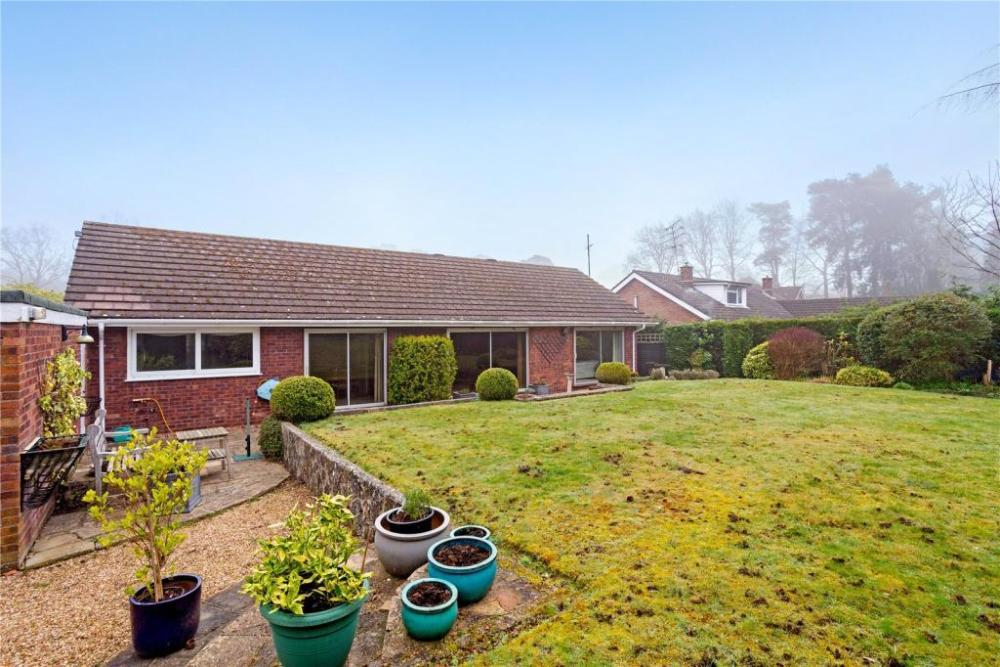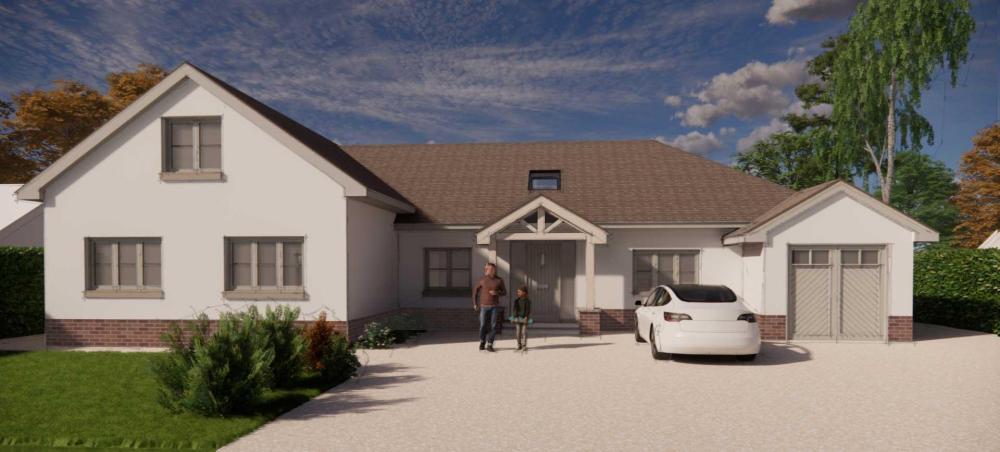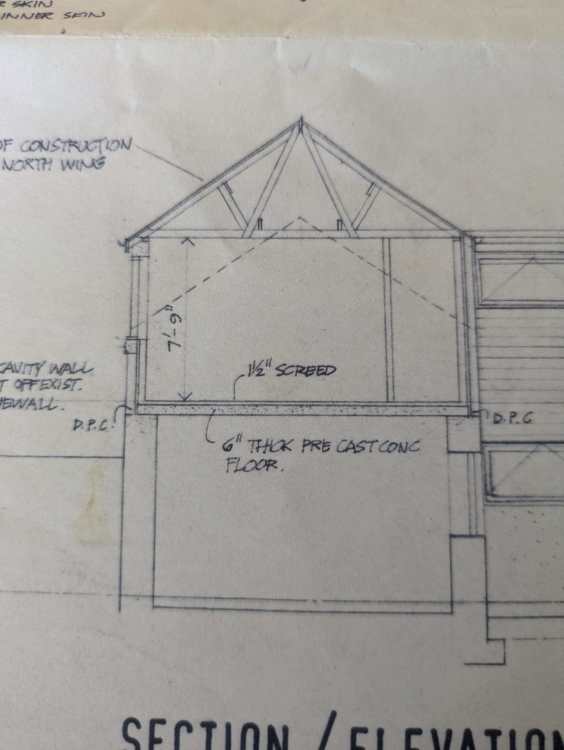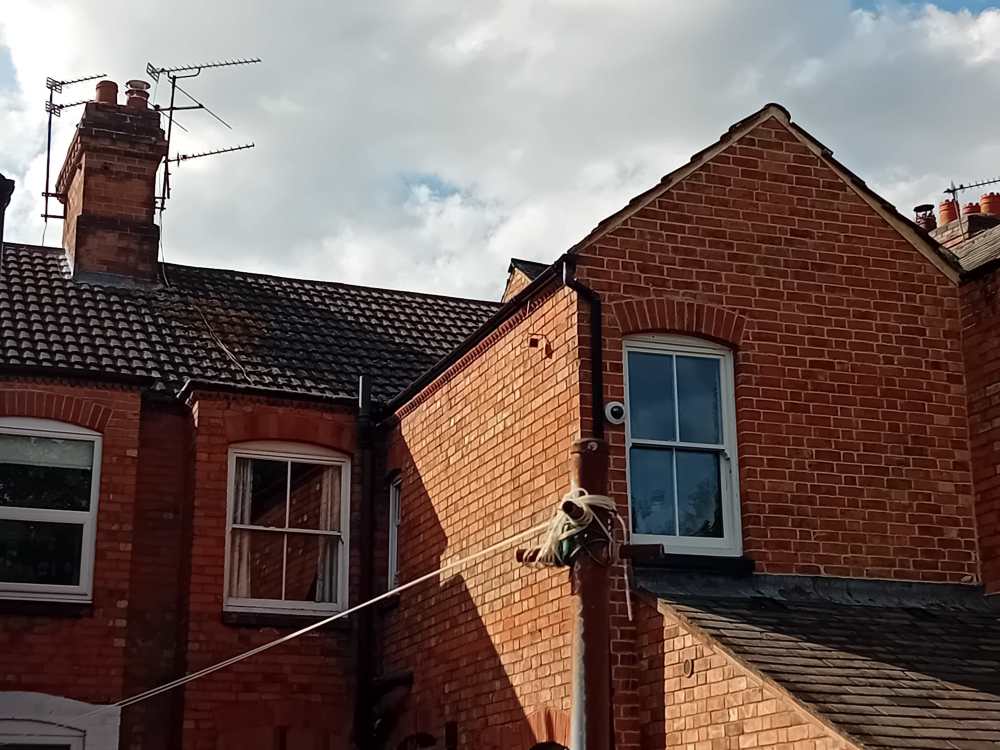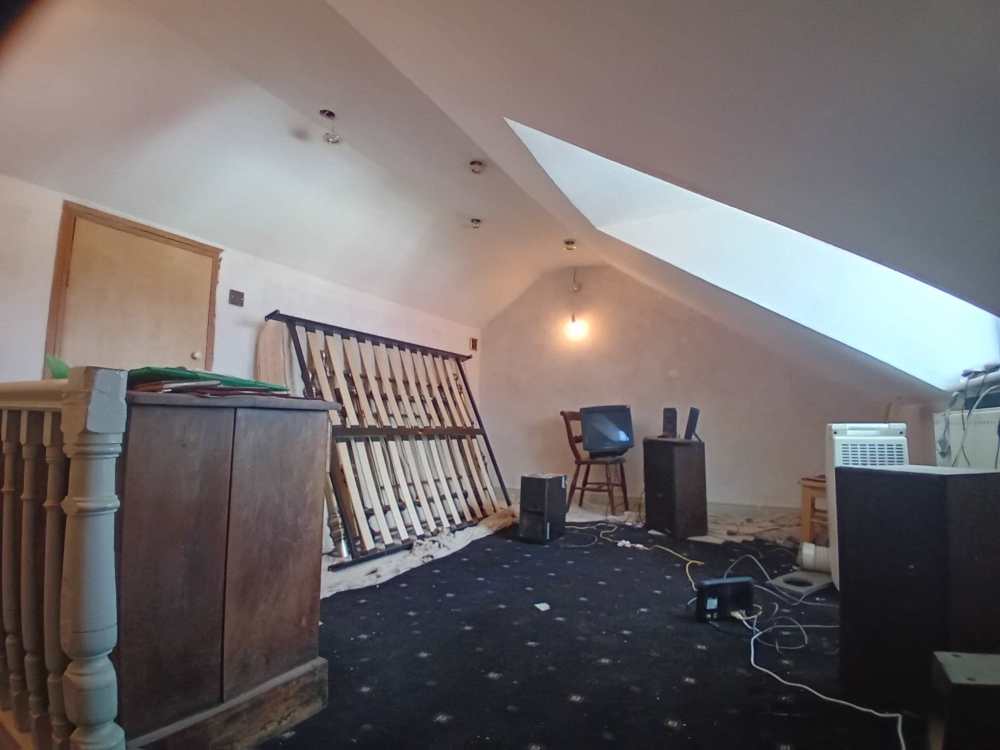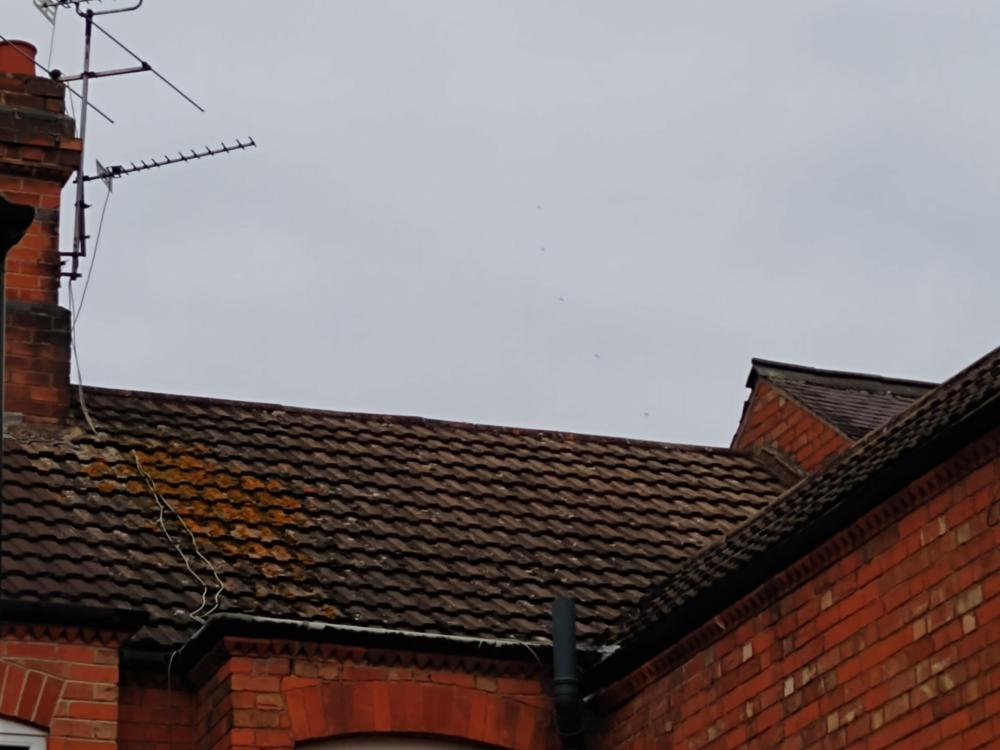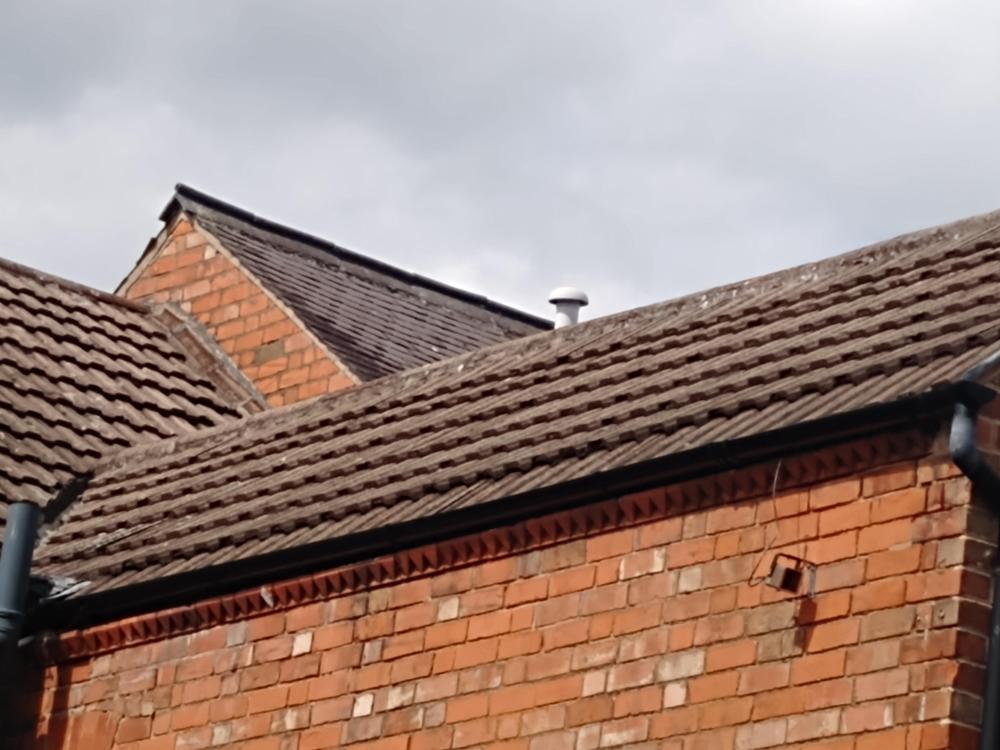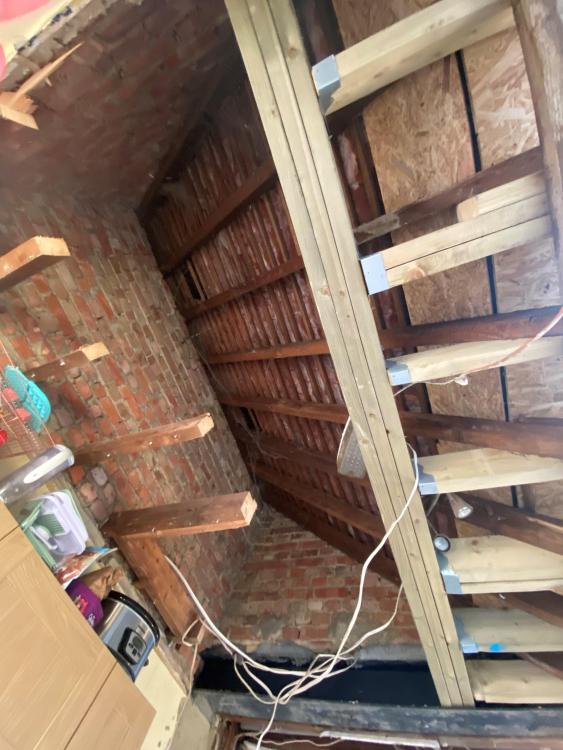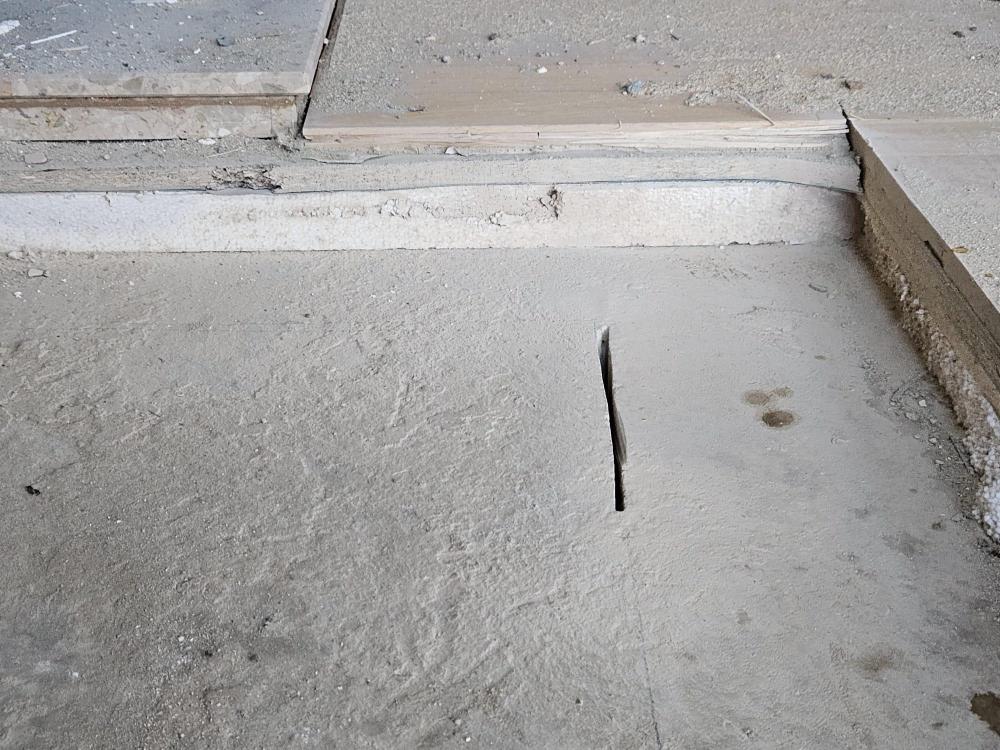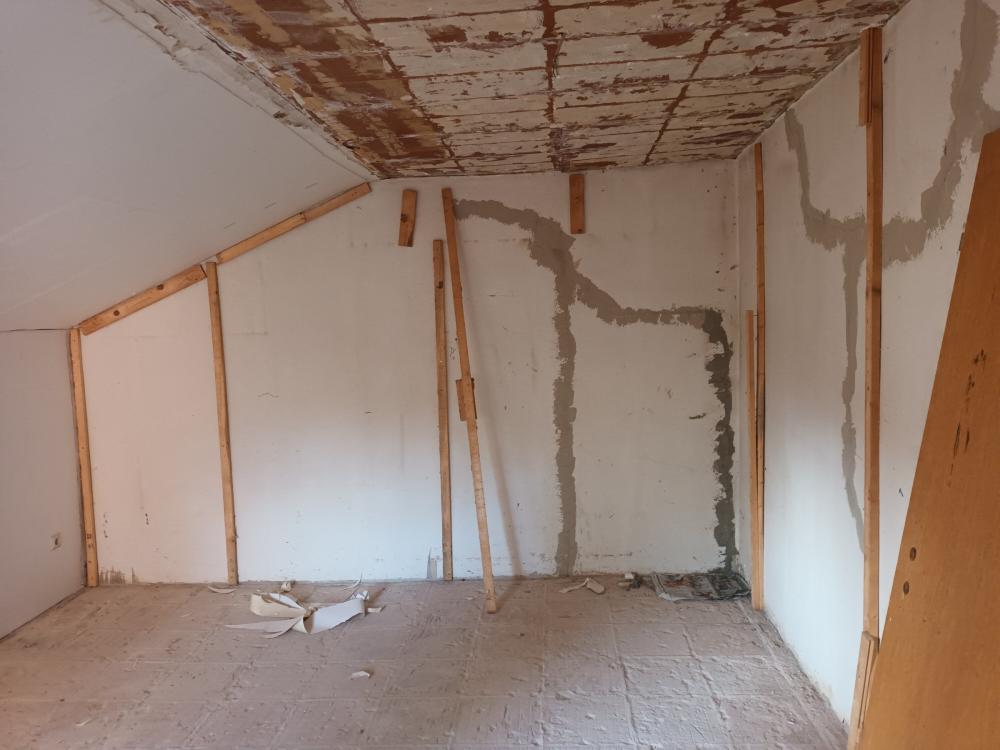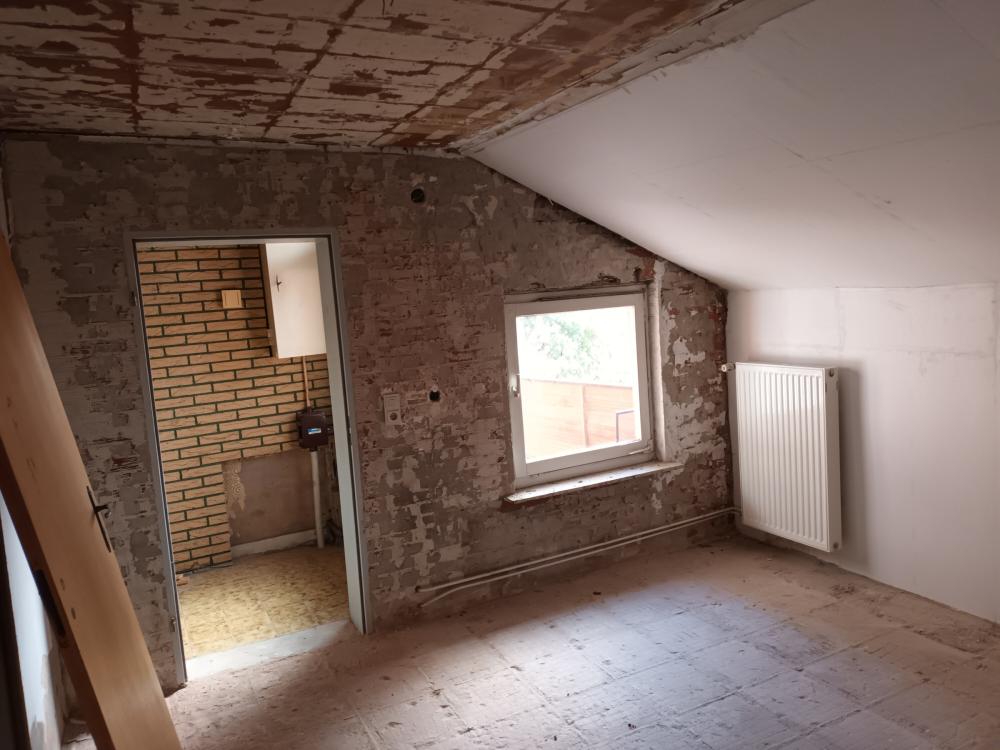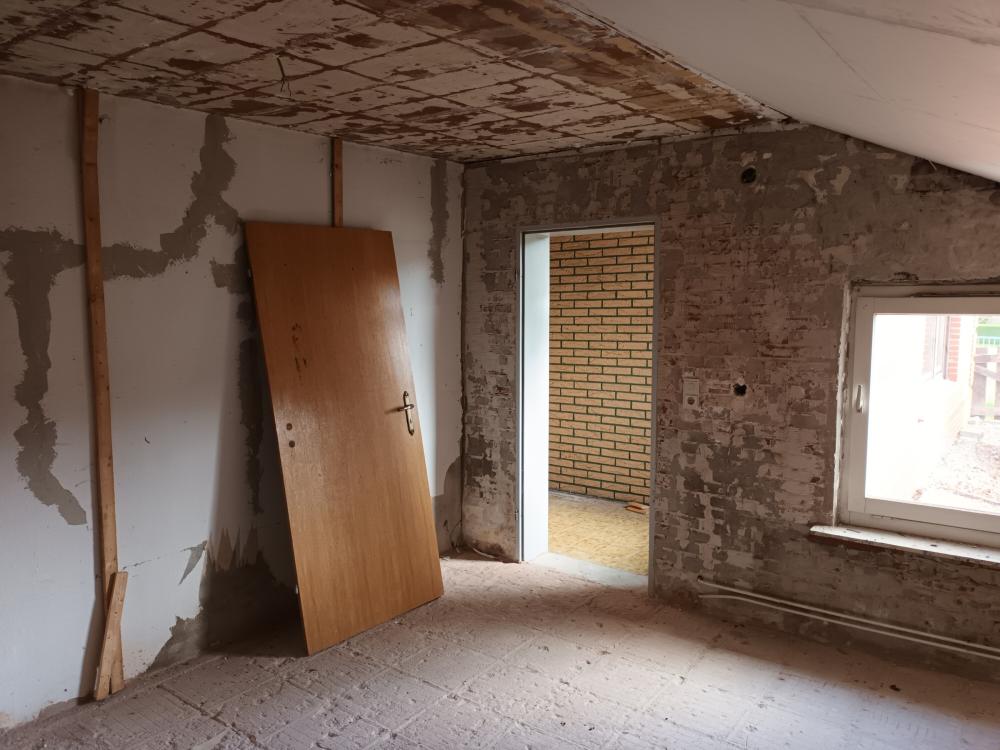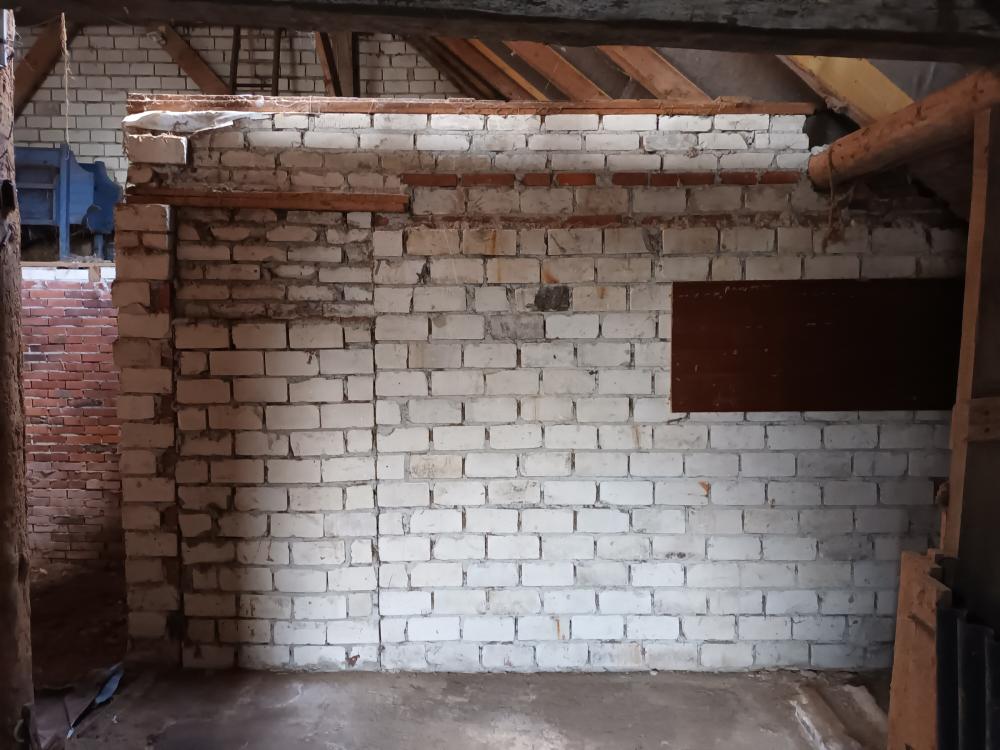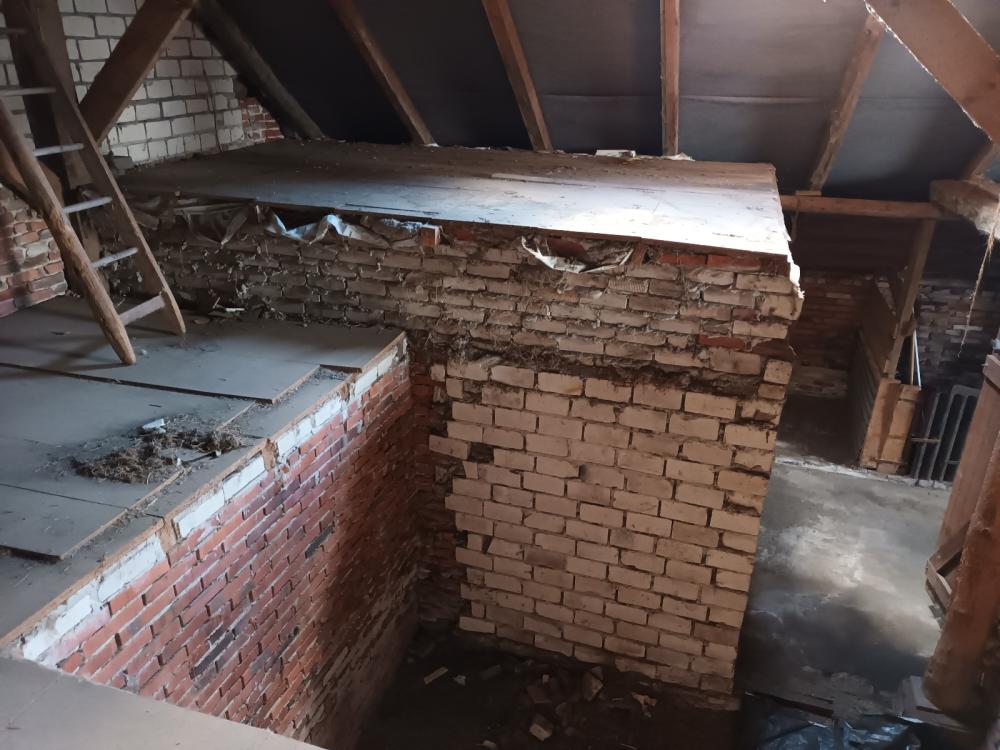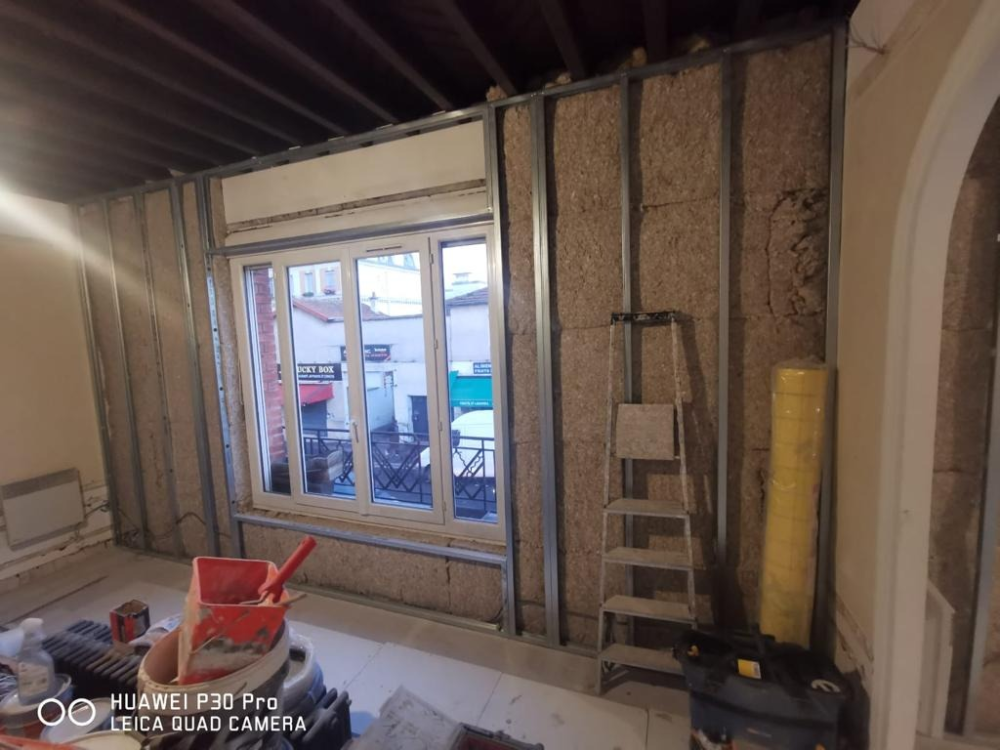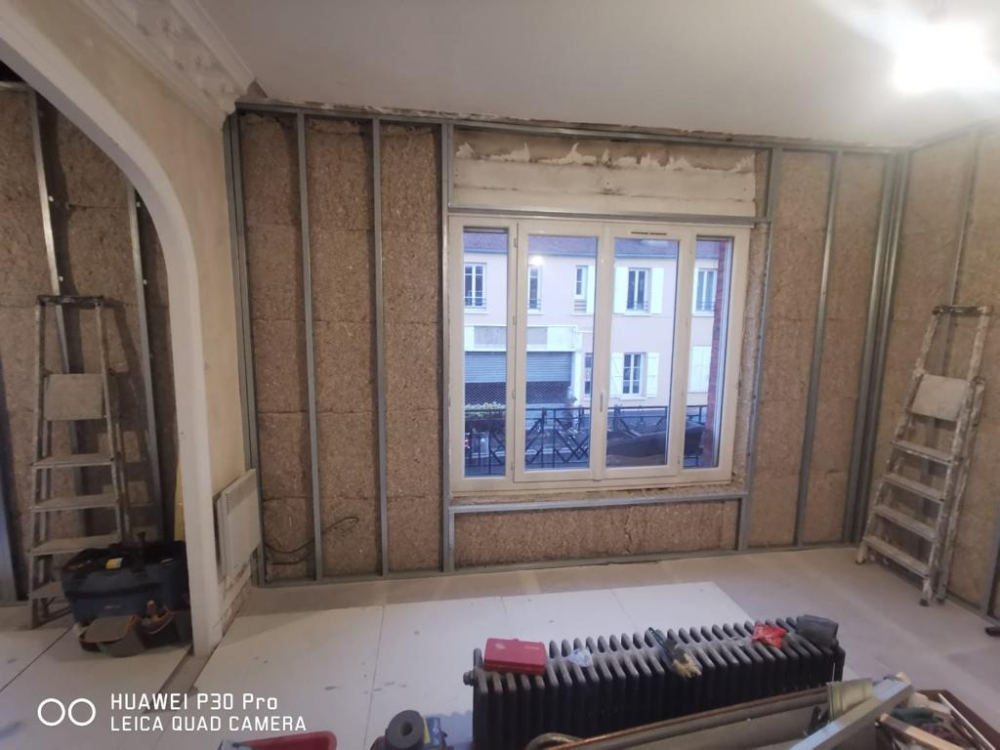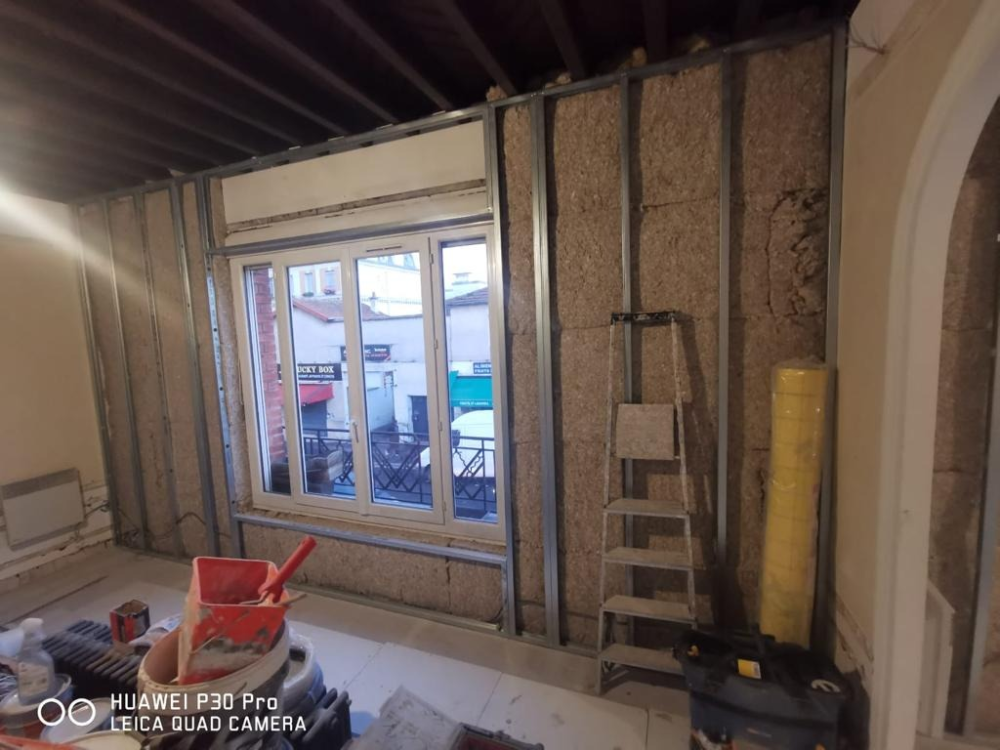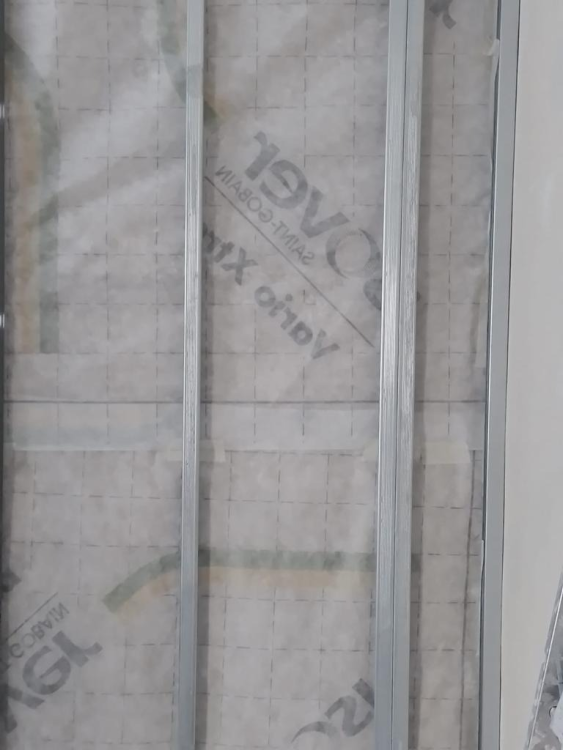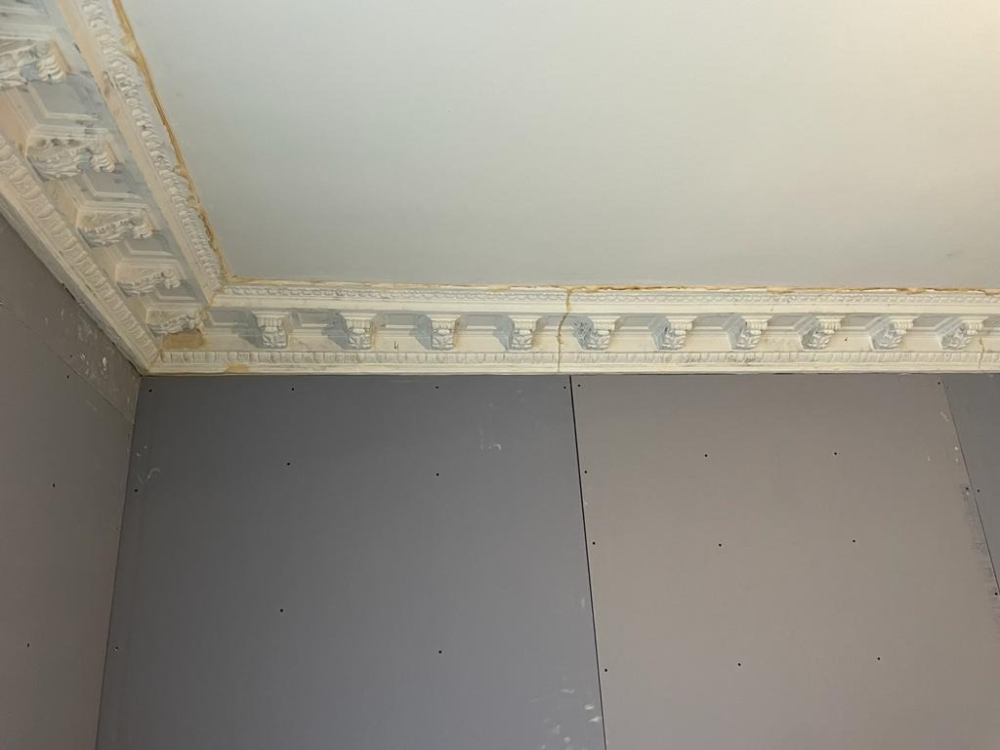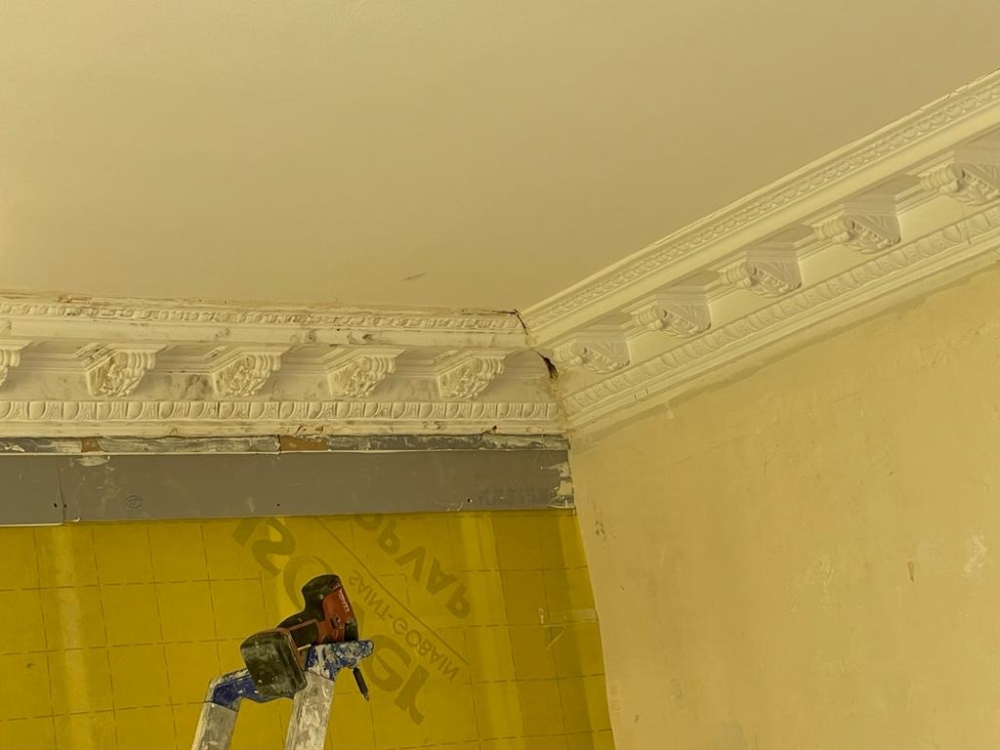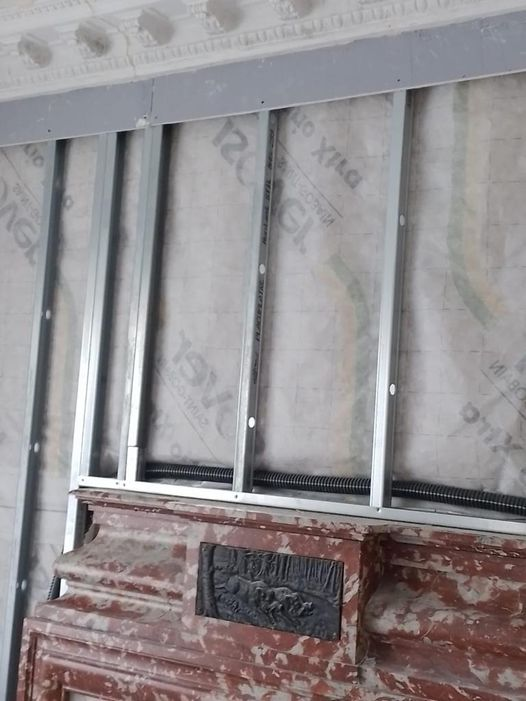Search the Community
Showing results for tags 'insulation'.
-
Hi all 👋🏼, I wanted to introduce myself and our project as I anticipate I'll be in hot pursuit of the forums thoughts, opinions and experiences in the forthcoming months. We purchased a 3-bedroom 1970's bungalow in August 2022 but had some planing complications due to a parish council policy that attempted to dictate that "a bungalow must stay a bungalow". 15 months later our planning application was finally granted, albeit with some compromises. Here's a few points on what we're attempting... Replace existing roof (& ceilings) entirely, building up the walls ~80cm, adding a new roof with 1.2m increased ridge height and steeper pitch Upstairs will accomodate two bedrooms, bathroom and "breakout area" overlooking hallway void Large single-storey flat roof side and back extension out to locate 65sqm kitchen/diner Complete re-configuration of downstairs layout Complete replacement of heating system (gas will be cut off entirely) New ASHP (current thinking Valliant Arotherm Plus, one-zone, no buffer) UFH all-round on ground floor (retrofit lo-profile UFH on top of the existing slab (Wunda?), insulated/screeded in new extension). Possibly fan convectors in bed-rooms upstairs Complete rewire I would assume MVHR (current thinking is a radial system installed through new posi-joists, manufacturer TBH but will get BCF to design) New solar panels, and battery (current thinking GivEnergy to unlock Octopus Intelligent Flux) New double-glazing all round (Residence R7 probably) also 2.7m high, ~8m wide sliding doors at rear (either Corteso Cor-vision or Minima) The biggest grey-area for us at the moment is how much to focus on/invest in improving the insulation and air-tightness of the existing exterior walls. I'll raise a separate thread for this in due course. Fortunately we were able to leverage a second mortgage and keep our existing home so we don't intend to live in the place whilst the majority of the work is taking place. The properties are only 0.5 mile apart so I am hoping I'll be able to keep a close eye on the build whilst I work from home. We are also intending to do a little of the work our-selves as possible (i.e. fitting MVHR, UFH, painting & decorating, airtightness membrane?, etc). Thanks for having me and in advance for any advice, Ollie Fleet, Hampshire Plans 24 OD - Amendments Combined.pdf Concept Images Existing Images
-
Hi, First time posting so apologies if I break any rules or social norms... We are looking to install a retrofit UFH system to our bedrooms which sit on top of an uninsulated/unheated garage space below. Current floor buildup is: - 150mm precast concrete beam floor - 38mm screed topping. No space to add insulation above the slab without having to raise external glazing that goes to floor so current plan is to insulate the soffit with about 150mm PIR (max. before restricting head height of garage below) and replace the 38mm screed topping with the following: - 20mm retrofit UFH (Wunda rapid response) - 7mm Wunda duoboard - 11mm UFH compatible carpet underlay - low tog Carpet I appreciate that this will likely mean a less responsive UFH system as it will be heating the 150mm slab but hoping the insulation below will still retain enough heat to make the system effective. Really just looking for a critique of the above plan, any thoughts or suggestions welcome.
- 4 replies
-
- ufh
- underfloor heating
-
(and 3 more)
Tagged with:
-
Roof was renewed in the 70's to a cement tile in an all-round poor quality job, now needs doing sympathetically, & back to slate (though possibly with some IN ROOF solar on back elevations). 1. Its a cold roof, see pic 1, showing SE & NE elevations. A main issue is - to up-grade its thermal element extra insulation on interior side of (original) attic room of greater than 40-50mm would be impractical due to already restricted room height & width, see pic 2. So, I'd 'try' adding insulation above rafters, complemented by the PIR between rafters, (& then makes it a hybrid roof, as Redbeard reminded me on here). So I see raising roof height (by say 50mm) basically being essential, to get to regs, & being 'engineered' by way of a counter-batten etc; but its also necessary my roof 'integrates' with my neighbour to the left side (using a bonding gutter of some comprehensive design I guess, though my B.C. officer says such a bonding gutter, & perhaps additional lead flashing(s), no big deal!) I'm still going to struggle to get to a 0.16 U-value however much insulation I can get in/up there but see little other option. (Redbeard also mentions a 2-thirds above/ 1-third below-rafter rule of thumb for insulation to avoid the 'interstatial' enemy). Q) Has anyone else any thoughts / suggestions on my meeting my 0.16 U-value for insulation requirements or even approaching - B.C. look sympathetically at draughty old properties . . they say. 2. I include below a link showing how TLX (gold, a multifoil) suggest their product be used above rafter in build-up of roof thermal element -including a counter-batten, stated as 38mm (old regs?, presumably now 50mm?), & which also provides ventilation on cold-side of roof. And this would raise my roof +/- 50mm). See its detailing & spec. here:- https://tlxinsulation.co.uk/wp-content/uploads/2021/08/TLX-Gold-Counterbattened-plus-50mm-PIR.pdf 3. It says, in this link, that TLX multifoil used to build-up thermal element with this product, including air gap/s, above rafter, followed by 50mm PIR/phenolic within rafter, has a U value of 0.34. So, if I were to indeed add a further 40-50mm max. PIR (thermal conductivity .022 W/mK) to the inside, under plasterboard . . would this 'build-up' get any where near the 0.16 requirement? (its beyond me to calc. this myself!). a) Anyone else care to comment further on my thoughs on this insulation detail? b)also what do you/others REALLY THINK about these multifoils - do they actually work (as long as fitting + air gaps adhered to) . . or not, & actually meet U values claimed? c) Also I'd be interested to hear from anyone about design/detail of a succesful bonding gutter - my roof will be in ~10mm slate but raised say 50mm as explained : meeting neighbour's cement tile. Many thanks, Stephen, Leicester area.
- 2 replies
-
- roofing
- insulation
-
(and 1 more)
Tagged with:
-
I need to re-roof/slate my 'typical' town-terrace property + upgrade its insulation. As a 'hands-on' tradesmam/handyman my work included small roof + gutter repair issues etc; So whilst aware + competant of some of the work & its detailing to meet regs, I need an amount more knowledge to accomplish everything this entails. I plan to be hands-on, assisted by say a roofer/tradesman (retired?) able to work up to the high standard I desire. I think, to obtain the guidance needed I'd best seek some practically orientated on-site advice/consultation, perhaps from a local roofer (retired?) or architect. . . . Can anyone suggest the precise profession/type of person to ask. I DON'T want to be just fed theory - I want practical tips & a site visit or 2. I'm north of Leicester. Info about current roof etc:- Roof renewed in the 70's in cement tile in an all-round poor quality job, now needs doing sympathetically. My finances are limited - I'd input some tools, be hands-on + my limited knowledge; further motivated to keep job in-house as scared of being 'hoodwinked' by a deceitful professional. A bonding gutter will be required where my roof joins neighbour, see left on photo 1. Is a cold roof - but to up-grade its thermal element I'd ideally now add insulation above rafters to the existing between rafters, thus course raising roof height by say 50mm too, but possibly unrealistic! . . as need to integrate with neighbours roof. Adding more insulation within existing attic room impractical as seriously impinges on current limited height/width. Thanks any suggestions.
- 3 replies
-
- insulation
- slating
-
(and 2 more)
Tagged with:
-
Ages ago I wrote a spreadsheet for doing what-if comparisons to see whether it was better to invest in more insulation in the walls, roof, floor, fit better windows and doors, or fit a better MVHR system. Others have found it useful and I've been reminded that I've not re-posted it over here, so here's the latest version. It should be self-explanatory, you fill in the cells with your wall, roof/ceiling and floor areas, add the areas of each door and window, put in the U values for each and, if you can, get hold of the met data from the met office for your area (the data in there is for West Wiltshire, right on the border with Dorset). This isn't a thorough modelling tool, it just looks at heat loss fairly accurately but doesn't take into account heat gains, although there is a crude way of doing that by drawing a line across the seasonal plot at the point where you don't use heating and you can very roughly assume that anything above that line will be heating. Please feel free to ask any questions, but bear in mind I wrote it back when I was designing our house and haven't used it for a couple of years. so I may be a bit rusty. Heat loss calculator - Master.xls [edited to add latest version of the spreadsheet]
- 127 replies
-
- 9
-

-

-
- heat loss
- ventilation
-
(and 4 more)
Tagged with:
-
Any ideas how to insulate my Velux windows? The ceilings below are horizontal with vaulted shafts for the Velux. The bathroom Velux is especially bad. Ignore the orange box attached to bathroom Velux - it's a digital shower processor no longer there Cover what's there with more PIR sheets and tape joins? Would air gaps pose a problem for interstitial condensation? Rip off PIR and start again? Other materials? What thickness of insulation (I know this will depend on thermal conductivity). Thank you.
- 8 replies
-
- insulation
- velux
-
(and 1 more)
Tagged with:
-
I’m looking for recommendations for the best value fibreglass insulation (preferably pre-perforated for joist spacing) that can be used for under floorboards in the crawl space. My floorboards currently have no insulation underneath and the laminate is very cold to walk on. I was looking at this as a potential option but not sure of R value required: https://www.wickes.co.uk/Knauf-Insulation-Space-Bottom-Layer-100mm-Loft-Roll---11-08m2/p/109449# Thanks in advance!
-
For reasons you can read about in the nightmare I reported here, the rear wall of our rear extension that went up 2.5 years ago is very damp and it's likely that the mineral wool fibre that was used to insulate the cavity is also wet. I am considering my options as to how to fix this aspect of the damage (after I have found a solution to fix the parapet wall issue described in the other thread). In an ideal world, the existing insulation just dries out and we can leave it there. But it's not clear to me that is very likely to happen very quickly / at all. It may therefore be the case that we have to open up the cavity by removing every other brick in a row or two, and then pull out the wool fibre. I will check with my main contractor, but from recollection, the wool fibre we used was amongst the cheaper products that pass building control, so it is not rigid and should come out easily. This would then allow us to either inject foam or bead insulation (in fact bead insulation can be injected through a small hole of only 22mm diameter). I'm thinking of something like the bead insulation described here. The majority of the wall is actually glazed, so the cavities are actually quite small: a triangle above our sliding doors which is about 5m wide by 1.3m high (at the apex of the triangle); and another triangle above our window which is about 3m wide by 1m high (at the highest part of the triangle). The problem is that the wall will be wet still. It is sealed from the outside (except at the parapet above, where the seal is crap and split/missing in various places) with a brick and mortar sealant and that is likely to impede its ability to dry quickly. So is there an injectable (or pourable) cavity insulation material that performs well in a damp wall and might even assist with drying it out? Sounds like wishful thinking, but I'm hoping some clever company has invented something. The only alternative I can think of is to remove the wet insulation, then try to run some dehumidifying ventilation into the cavity, or remove the wet insulation and live with no insulation until it is dry. Just wondering if anyone has any experience, albeit more likely upgrading a much older wall, not one that was built so recently.
- 44 replies
-
- damp
- cavity wall
-
(and 1 more)
Tagged with:
-
Hello, Looking for some advice with insulating a vaulted ceiling. The rafters are 100mm in thickness, with 2 vented roof tiles at the top. Is it as simple as insulating it with 100mm PIR board and then using insulated plaster board, or are there other layers that need building up, such as a vapour barrier etc? Many Thanks Joe
- 5 replies
-
- vaulted roof
- vaulted ceiling
-
(and 2 more)
Tagged with:
-
Any ideas as to how you would go about insulating a loft hatch with a ladder attached? Any examples? We inherited the loft ladder - it might be 40+ years old but does a good job. The ladder is fixed to the hinged loft hatch door as well as to the joist/binder at the top. Would you just stick some sort of PIR insulation board on, cutting around where the ladder is attached to the hatch, and just accept that there will be breaks in the insulation? Is there a thinner insulation board I could use? There's not much space between the wooden hatch and the ladder at the top of the ladder. Or would you remove the ladder, fix insulation to the wooden loft hatch and then remount the ladder on top of the insulation. (I need to remove the ladder anyway in order to get a new MVHR unit through but there's a lot of rusty looking screws.) In which case what (screwable) insulation material would you use? Would I need to relocate the top of the ladder? Or would I need a different ladder? Open to suggestions! Thanks.
- 7 replies
-
- insulation
- loft hatch
-
(and 1 more)
Tagged with:
-
Shipping Container Insulation Options There are numerous videos online about this, all different, mostly US-based (tiny houses being a thing over there I guess), and some well let's just say, their methods might be open to question!? 🫣 I’m potentially looking/needing to get a 20' shipping container as part of my Small Mission Hall project in the Outer Hebrides. I’ll need it at some point to cover me as a temporary live/office workspace, plus for temporary storage of materials. I could then possibly also use it as a design/studio workspace. Have looked into second-hand site office containers, but their cost is prohibitive, and so many fake sellers to try and avoid! So what would be the best type of insulation for the floor ( I’m assuming it's best to do some form of floating floor here?), the walls and the roof? Is one type of insulation material good for all three, or am I better looking at horses for courses approach of different options for each location? As the container is the structure in reality, can insulation be stuck to the container insides (a lot of talk about using spray foam insulation?), or would I be better looking at some form of internal timber framing (this might be another question! 🤣) and allow an air gap behind to minimise the risk condensation?
-
I have 2 corner windows with the obligatory steel corner posts. How should these be insulated, all 4 sides or just the 2 external sides? Was thinking of using this for insulating:- https://www.phstore.co.uk/spacetherm blanket or CBS
- 10 replies
-
- insulation
- corner post
-
(and 1 more)
Tagged with:
-
Hi All So I've posted a few topics on the extension I'm having regarding UFH. So far, I've originally specced a Wunda EPS400 SYSTEM covering 52SQM across both the original part of the house and the new extension. This was on the assumption that beneath the current floor (15mm engineered oak), there was a thin ply board on top of the existing slab. The builder has removed the flooring to find there's the following: 20mm plyboard 50MM of polystyrene insulation which sits on the existing slab (picture attached) Approximately 90MM of depth to line up with new extension slab, although this can go to 120MM potentially. There are two options or more if you advise: Remove the rest of it to expose slab, add 50mm celotex xr4000, membrane then Wunda EPS400 Remove existing insulation, install 50mm celotex, membrane then UFH screed. I'm sure there will be better suggestions and thanks for your input in advance. Ultimately the outcome is to have an UFH system which now it seems the existing slab may not need to be dug out due to the level of the new slab which is yet to go in.
-
Howdy. I have a cold north facing office room (2.2m wide by 2.2m long) which has a pitched ceiling thats 3.6m at it's peak. The ceiling has pine cladding and under that is some pastic sheeting then insulation roll. Looking at the heat calcs if I made the ceiling flat (say 2.4m) I would need a lot less heating in the room. If I used an insulated plasterboard with vapour layer would I need ventilation in the void that would created between the old pine ceiling and and the flat roof? Any advice on this would be great thanks
- 2 replies
-
- pitched
- insulation
-
(and 1 more)
Tagged with:
-
I have a 60s brick/concrete roof tiled semi 2 bed hipped bungalow, it’s got basic insulation in the loft between the ceiling joists 3”x2” then when i had the cavity wall insulation done they put another layer of insulation across the top of existing approximately 125mm. what’s the recommendation to increase the depth to? If any or is what I’ve got is good enough! If more required any advice on best value and best to use. I’m a pensioner so would have to get someone in to do it! Thanks in advance for any advice and suggestions.
-
We are erecting a steel portal frame 8m x 12m i have positioned the 9 inch treated purlins with small wooden blocks beneath them so I can attach white corrugated tin beneath the wooden blocks will enable the edges of the corrugated tin to slide in, and sit over the i-beams by approximately 20 mm above this layer of tin and between the 9-in purlins I wish to use rolls of fiberglass insulation of which I have a very large quantity people have mentioned Vapor barriers and air gaps beneath the black top layer of tin but I can't find an exact detail of the Construction I am proposing any advice would be gratefully received I'm very keen not to add a vapor barrier if it's not necessary
- 1 reply
-
- insulation
- vapour barrier
-
(and 2 more)
Tagged with:
-
Hi folks, We're remodelling our ~1990s built two storey, end of terrace home, and I'd like to improve our current wall insulation, since at present it offers the least thermal resistance of the building fabric. I'm interested in recommendations on approach we can take to improve this. Walls Current: Brick / cavity / block walls with some questionable looking EPS boards in the cavity. Dot and dab plasterboard on the inner block. Plan: Help! 😬. I've read a lot of conflicting information about whether internal insulation is suitable or will cause interstitial condensation. Also not sure of the most cost effective construction method (insulated plasterboard on dabs, insulated wet plaster etc...) There would be roughly 34 linear metres of wall to insulate per floor, at 2.4 m ceiling height. I’d like to focus on simple and practical solutions that we can relatively easily implement. The underlying work for our builder is to reconfigure the layout involving some light structural changes, and construct a porch area (all on ground floor of property). We're having the heating system pipework upgraded to suit low flow temperatures and fitting an ASHP. Any disruptive works (e.g. plasterboard off) would be constrained to ground floor initially, and could be extended to first floor as a phase 2 at a later date. Construction materials are: Ground Floor Current: Uninsulated beam and block, battens, chipboard deck. Plan: Lay DPM / PIR / floating floor deck on top of beam and block. First Floor Current: Chipboard deck suspended on timber joists. Plan: Nothing so far. Roof Current: Pitched roof / cold loft, around 100 mm wool insulation already laid. Plan: Increase to ~300 mm wool insulation. Happy to hear everyone's thoughts and advice 🙏
-
Hello, Does anybody know the U-Value required when retrofitting / renovating underfloor heating? There seems to be plenty of resources talking about new builds but finding it hard to find any definitive information for retrofit. For my specific property, I have a ground and first floor. Both having a concrete slab floor with screed over it. I will remove the screed, then add insulation, then UFH pipes, then concrete poured over. Trying to work out how much insulation I need. I'm assuming less required for the first floor. Once I determine the maximum U-value permissible for building regulations, I can use various services such as this U-Value calculator to work out how much of what insulation I need. Any help appreciated!
- 22 replies
-
- underfloor heating
- insulation
-
(and 1 more)
Tagged with:
-
I have steel beam on the outside skin. Thinking of Aluminium windows above and below. I'm thinking if inner part of widow frame touches flange of beam then thermal bridging in the frame is lost. Maybe encase beam with insulation? So how best to insulate beam? TIA
- 11 replies
-
- i beam
- insulation
-
(and 3 more)
Tagged with:
-
We are rebuilding an old cottage and have only 120-130mm available for insulation underneath the UFH (probably in 55-65mm of liquid screed). What type of insulation, what suitable product, will give the most insulation? Thanks!
- 9 replies
-
- insulation
- floor slabs
-
(and 1 more)
Tagged with:
-
Our new property has a bedroom that has been extended in to the barn: Wall 1: Half the wall is internal, half external. External: Solid brickwall, double glazed window. Wall 2: Solid external wall. This wall has a radiator and sloping roof which is insulated with mineral wool. The wall and sloping roof have thin styrofoam stuck against it. Wall 3: This wall connects with the barn. Previously it was covered with wood panels and styrofoam insulation was loosely placed between the wall and the wood. Not sure if this provided any insulation. Wall 4: The only square wall: Previously it was covered with wood panels and styrofoam insulation was loosely placed between the wall and the wood. Half the wall is in the barn, and the other half connects to an unheated storage room. Floor: concrete Ceiling: Wood. I'm not sure if this is insulated. Will need to have a look. Perhaps I could just roll out some mineral wool on the flat roof of the room? Because we haven't lived in this property we don't know how well this room heats and retains heat. The exposure to external walls is quite small because of the sloping roof and the wall with the window & door is only half external. The barn is cold (perhaps the same temperature as outside?). However there won't be any rain or wind inside the barn so we don't need to worry about moisure coming through the wall from the outside. I am thinking of insulating the walls internally, but not sure which will have the best impact. Only one wall is square. The other 3 have the sloping roof profile. The wall with the door frame and window seem to be the most difficult to insulate, and the wall with the sloping roof only has maybe 4ft height exposed to the external wall. The walls to the barn seem like the easiest to insulate as we don't need to worry about windows, door, sockets, pipes etc.
- 4 replies
-
- barn
- barn conversion
-
(and 2 more)
Tagged with:
-
Hi, I’m currently refurbing the entire ground floor, converting integral garage to Kitchen and moving the lower flight of stairs. I’d like to install ufh with ceramic tiled floor throughout but only have 65mm from the block and beam surface to current floor level. I’ve seen some tile direct eps boards which look like they will work, but the insulation value is not great so I’m looking into possibilities for insulating the void below the block and beam. Any thoughts on pearlite beads versus blown loose eps versus polyurethane foam injection would be greatly appreciated.
- 2 replies
-
- insulation
- block and beam
-
(and 1 more)
Tagged with:
-
Hi, I am looking at potentially installing insulated plasterboard on outside facing walls. I have two rooms on the first floor that are exposed on 2 sides and are by far the coldest rooms in the house. I am about to remove the carpets and install new flooring, sand/plaster were required and refinish. I am wondering if there is a good time to potentially install some insulated plasterboard on the outside facing walls of each room. I have an unfilled cavity wall Stone (outside) - Gap - Brick wall (inside), is there any reason I should not do this? Anything in particular I should be mindful off?
- 1 reply
-
- insulation
- old house
- (and 4 more)
-
After reading every post on this forum on the subject of sound insulation and in particular Rockwool I wanted to document our experience. Until the delivery arrived and we opened the packets we really didn't know what we were going to be working with. Here is the best description I can give. We ordered the following from Insulation4Less. They told us the lead time was about 4-6 weeks (nationwide shortage) but actually it all came within a week leaving us with a literal mountain of rockwool to store around site. It was wrapped but needed to be lugged into the house out of the rain. Big job. The 50mm deep packs were orginally intended to go in the ceilings where there were lots of pipes to fit around. We chose RWA45 rather than the more expensive Flexi. Having not seen the Flexi I can't give a really accurate comparison. But the RWA45 is flexible and can be pushed into spaces and compressed a little anyway. And it is cheaper. It is not rigid / solid like Celotex (which I had first thought it might be). Here are some open packs. It is pretty easy to cut using an insulation saw like this. https://www.screwfix.com/p/bahco-insulation-saw-22-560mm/7498k But it does shred easily too. Mask and gloves absolutely essential. The 100mm deep stuff looks like this. So although it comes in these "batts" which have a form to them, you can trim to to the size you need. We are trimming almost everything because the 600mm wide batts don't fit into the 560mm gaps between the 600mm centred studs. But there are plenty of places to stuff the offcuts and the puzzle of how to use every offcut as efficiently as possible is keeping us both amused somewhat. We are fitting this into all the stud walls (internal) and the ground floor ceiling. No need for any insulation on the external walls or top floor ceilings as that has been pumped in by MBC (more of that in another blog). Hubby used our MVHR builders straps to fit up a load in the ceiling. He is now using cheap pallet strapping and a staple gun! It is fair to say that we have been doing this sound insulation on and off now for well over a month. It is a big job. Ceilings harder than the walls. Time consuming. A bit (alot) messy. Requires us to ply the walls first (where ply is needed) and then insulate. For the stud walls that don't need ply we will work as quick as we can in the evenings once the the plasterboarders are on site (due next week) filling in behind them as they plasterboard one side. Going to be a busy week. But progress is satisfying and physically working on our build again is fun.
- 18 comments
-
- 4
-

-
- insulation
- sound insulation
-
(and 1 more)
Tagged with:
-
This is just a visual update for people who are following my insulation saga. As you know, we are insulating the streetside wall with a good thick layer of cellulose-based insulation (cotton/linen/hemp). Of course I mean: insulating material, air, fireproof panel. I think this duct is for the stereo speaker cable: I didn't know one could simply remove the decorative mouldings and then reattach them, but that's what the workers have just managed to do. Does it all look good? Any comments?

